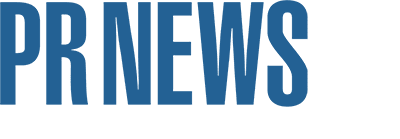Although executive management increasingly is recognizing the importance of the communications function to the bottom line, the need to measure your effectiveness has never been more critical.
A recent study by the Council of Public Relations Firms found U.S. companies that spent the most on corporate PR programs ranked highest among Fortune magazine's list of "Most Admired Companies," with the top 100 spending on average $32.5 million on communications and the bottom 76 averaging less than $4 million.
In healthcare, however, budgets are being squeezed to compensate for deep cuts in federal reimbursements. In this penny-pinching climate, the pressure is on to show how your department's budget is a wise investment in the organization's bottom line.
Here, Lisa Wyatt, VP of public affairs and marketing for the Washington Hospital Center, provides insight on how her department handles PR measurement and its role in maintaining budget levels and executive confidence.
She can be reached at 202/877-6305.
HPRMN: What communications does your department measure?
LW:
We try to measure everything, including the number of advertising calls our marketing campaigns generate for hospital admissions, new media coverage and its advertising equivalency, internal surveys and how physician appointments are affected by media coverage. We also submit a lot of work for industry awards that require measurement analysis.
HPRMN: How important is measurement to upper management and how often do you submit reports?
LW:
[Measurement reports] give upper management an important opportunity to see the cost-benefit ratio of PR and marketing and how valuable the function is to the bottom line.
Washington Hospital Center is one of the few hospitals that are profitable in this market and these kinds of investments contribute to its success.
We provide intermittent reports and one big annual report.
HPRMN: How have your measurement efforts affected your department budgets?
LW:
At a time when many hospitals are having to scale back their marketing activities because of deep cuts, we've been able to maintain our budget levels [of $1.5 million in advertising and $1.5 million in PR and marketing activities] over the last few years.
I believe that part of the reason we've been able to maintain our budget level is how we measure our progress.
HPRMN: There tends to be some debate over using advertising equivalencies to measure PR value. How effective is this particular measurement analysis for your reporting needs?
LW:
Advertising equivalents are a good barometer of PR value, but it is just one way of going about it. [This department] generates a lot of media exposure - last year we generated $6 million worth (advertising) of media coverage with a media relations budget of $250,000. It's a viable means of determining PR impact.
HPRMN: How does PR measurement affect physician participation in your PR initiatives and how many participate?
LW:
Most physicians want to participate in our media relations efforts because they see how it helps their business.
We provide reports on their press activity and how it affects physician appointments and we mention [the media coverage] in our monthly physician newsletter so their peers can see it. But those that don't want to participate will not be influenced by measurement reports.
We have about 100 doctors who participate in our media programs out of 350.
HPRMN: What are your measurement priorities?
LW:
We are first interested in measuring the number of calls our ads generate then public opinion information, amount of news coverage [generated], employee satisfaction and customer satisfaction.
Last year, our marketing programs generated 19,000 phone calls to our physician referral service and 800 physician appointments were made for doctors who participated in media coverage.
